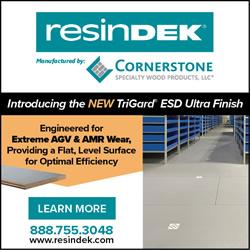How to Design for HP Multi Jet Fusion
Each 3D printing technology has a unique set of design recommendations to ensure the best result. We would like to share the design specifications provided by HP for their HP Multi Jet Fusion 3D printing technology to help you achieve the best results possible.
Each 3D printing technology has a unique set of design recommendations to ensure the best result. We would like to share the design specifications provided by HP for their HP Multi Jet Fusion 3D printing technology to help you achieve the best results possible. These design guidelines apply to all Multi Jet Fusion materials, including Nylon PA12, Nylon PA12 Glass Bead, Polypropylene, and TPU Flexible Polymer.
Before starting, it helps to understand what HP Multi Jet Fusion (MJF) is and how it differs from other 3D printing technologies. According to HP, The MJF printing process is a combination of Powder Bed Fusion and binder jetting technologies. Unlike SLS or FDM, which use a point-by-point printing approach, HP MJF technology can print a complete layer at the same time. A layer of powder material is spread on the print bed, then fusing and detailing agents are deposited at voxel-level on top of the powder. These define the regions of the layer that need to be fused or protected from fusion respectively. The bed is heated and the areas where the fusing agent was deposited are fused together.. Once these fused layers cool down, they solidify to form the designed 3D-printed part.
Wall thickness: When you're creating a 3D design for Multi Jet Fusion, the minimum recommended wall thickness is 0.3mm for short walls oriented in the XY plane, and 0.5mm for short walls oriented on the Z plane. If you design your part to be optimized for a specific orientation, make sure you make this clear to the person or company printing your part.
Cantilevers: When printing a cantilever, the minimum wall thickness depends on the aspect ratio, which is the length divided by the width. For a cantilever with a width of less than 1mm, the aspect ratio should be less than 1. There are no specific recommendations for widths of 1mm or larger, but for parts with a high aspect ratio, it is recommended to increase the wall thickness or to add ribs or fillets to reinforce the part.
Connecting Parts: Sometimes a pair of printed parts need to fit together to form the final application. To ensure correct assembly, a good starting point would be to leave a gap between the interface areas of these parts of 0.4 mm (+/- 0.2 mm for each part).
Moving Parts: As a general rule, spacing and clearance between faces of parts printed as assemblies should be a minimum of 0.7mm. Parts with walls which are 30mm or thicker should have a larger gap between each side to ensure proper performance. Parts with walls that are thinner than 3mm thatcan have a clearance as low as 0.3mm, but this depends on the design. Testing may be necessary to ensure quality performance.
Thin or Long Parts: Thin and long parts are susceptible to non-uniform cooling, which may cause uneven shrinkage along the printed part. This can warp the part from it's original shape. The potential for warpage can be minimized with good design practices. A general guideline is that any part with an aspect ratio higher than 10:1, an abrupt change in its cross-section, or a predominantly long and thin curved segment is susceptible to warpage. These include thin and long parts; parts with abrupt changes in cross-sections; and thin and curved surfaces.
Hollow Parts: For large or thick parts, it is recommended to minimize the risk of warping by hollowing the part or adding an internal lattice structure. The minimum recommended wall thickness is 2mm, but better mechanical properties are achieved with thicker walls. The optimum choice is dependent upon the application. Hollowing can be easily achieved with professional software such as SolidWorks, Materialise Magics, Autodesk and Netfabb. Depending on the end-use application, the part can be left solid, or drain holes can be added to remove the powder in the post-processing process. Ensure the drain holes are at least 4 mm wide if there is a single drain hole, or 2+ mm wide for multiple escape holes. When placing the holes ensure they are placed in a way that forced air can be used to effectively clean out trapped powder. If no escape holes are provided and powder remains within the part, the part will be heavier and stronger than with the fully hollow option. Leaving the powder trapped within a part also saves post-processing time since powder extraction is not required.
Lattice structures: Lattice structures are used in thick or large parts to minimize the chance of warping or for producing lighter parts. Replacing solid materials with a lattice also reduces the cost to 3D print the part. This design optimization strategy involves hollowing a part and replacing the internal solid mass with a lattice structure that provides mechanical integrity. This re-design can be automated with professional software such as Materialise Magics or nTopology.
For additional advice on how to design for HP Multi Jet Fusion, you can take a look at the guidelines provided by Tempus 3D on our design guidelines page. Here you will find details regarding dimensional tolerances for different design features, guidelines to optimize your print accuracy and aesthetics, and details such as how to design for interlocking parts and hinges. As an HP Certified Multi Jet Fusion 3D Printing Professional, Tempus 3D has the technology, skills and service to provide you with consistently high-quality parts, quickly and affordably. When you are ready to put your idea into reality, you can access online quotes through Tempus 3D's instant quote page, or learn more about our materials, services, and access case studies and customer success stories through our website at www.tempus3d.com.
Featured Product

